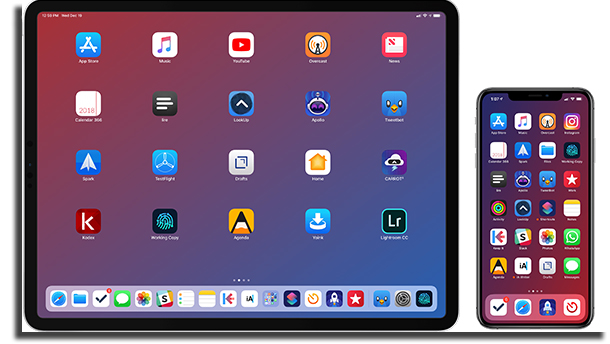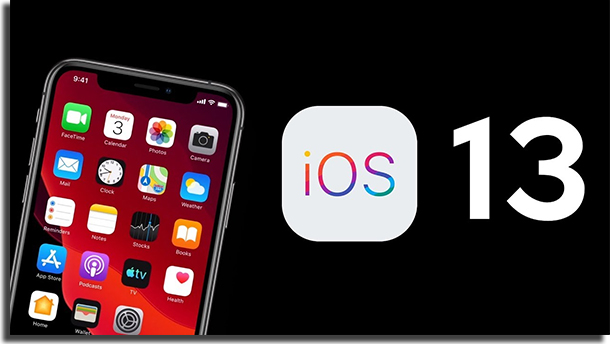Apple's mobile devices and the term iOS go hand in hand with the company's first iPads manufactured and marketed – before that, its name was iPhone OS. But the meaning of iOS and its role in gadgets is not always obvious. Therefore, today we will answer once and for all what iOS and present everything you need to know about the Apple system.
Learn more about the origin of the operating system, its versions, and which devices use it today, as well as which are the main apps offered natively by the developer for iPhone, iPad and other devices. Let's go?
What iOS?
IOS is an Apple-developed operating system that can be found on the company's iPhone, iPad, and iPod Touch, as the company's notebooks using MacOS and smart watches watchOS.
It is responsible for interpreting commands and serving as a bridge between user command entries (voc) and the operation of various applications and processes running on the system, such as file storage, among others. For example, Google's Android is also an operating system that covers the same function, as well as Windows, Linux, and others.
So whenever anyone talks about iOS, they are talking about the device's operating system and essentially everything your smartphone can do depends on this system to work properly.

IOS Features
As we mentioned, there are several native iOS features. But, unlike what you may be thinking, about apps like iTunes, iMovie for video editing and other similar apps, when we talk about operating system, we're talking about the processes responsible for input and output control and the operation of primary features. devices such as:
Home screen
The home screen you see when you turn on your iPhone, for example, is actually a process also called SpringBoard, responsible for managing the included icons and shortcuts, and has a top bar where it displays data such as handset time, battery level, signal WiFi, Bluetooth and other information. In addition, SpringBoard is also responsible for processing media searches through the search function or displaying the chosen background on the device – which incidentally can only be changed from the iOS 4 update.
Folders
Also included in the iOS 4 update, folder creation processing with application icons is also part of the operating system's tasks. These folders are created when you drag one icon from one app over another, for example by placing two or more apps in the same “pad” available on the smartphone or tablet screen.
Notification Center
That screen you reach by dragging your finger down the iOS device screen is known as the notification center. It is also one of the functions of the operating system and is responsible for organizing them and allowing users to control their notifications.
Control center
Already the screen where you can enable or disable features such as Bluetooth, WiFi, Airplane mode, brightness options, among others is known as the control center, which can be accessed by dragging your finger from the bottom up on the device screen. The control center also offers convenience by supporting audio controls when listening to music on iOS.
Crab
Now that you know what iOS, you may be wondering if Siri is an external application or part of the operating system. In this case, considering the level of access delivered virtual assistant of Apple devices, surely you can be sure that it is a process included also as part of the OS. (Operating System). This is exactly why she can perform so many functions, such as opening apps, searching things, playing music and more.
There are still several other functions and if we were to list them all the article would be really complex. So essentially you may think that everything that is processed on your iPhone, iPad, or iPod Touch is the responsibility of iOS, and if there is a problem with the operating system, the whole operation of the device may be compromised as it is the basis for everything else to work. – if we do not consider thehardware and physical parts (such as processor, battery, etc.) of the device.

IOS native apps
Now that we know what iOS and its basic processes we can talk about native apps. These basically involve all those that are already installed and available on your device from the first setup when you turn on the device after purchasing it.
In addition, native applications are always present even when you restore the device to factory settings. Native iOS apps are:
- Settings
- App store
- Apple watch
- Apple TV App
- Search My Device
- Newsstand
- handbag
- Compass
- Calculator
- Wallet
- Calendar
- Camera
- Contacts
- Tips
- FaceTime
- Photos
- Game center
- Recorder
- iBook
- iTunes
- Sticky notes
- posts
- Maps
- Music
- Grades
- News
- Passbooks
- Podcasts
- Health
- Time
- Videos
The really big list, isn't it? But now because all these apps are installed on your device.

IOS Versions
It is important to mention that even explaining what iOS you should consider that the operating system has undergone several changes and received multiple improvements since its release. These improvements usually happen with large packages of changes known as system versions. Launched in September 2019, the latest version of iOS is iOS 13 at the time of writing.
If you're curious about when the other versions were released, follow the dates:
- iPhone OS 1 – June 2007 (next to the original iPhone release);
- iPhone OS 2 – July 2008;
- iPhone OS 3 – June 2009;
- iOS 4 – June 2010;
- iOS 5 – October 2011 (the first release that includes iCloud storage);
- iOS 6 – September 2012 (this release brought over 100 features to devices);
- iOS 7 – September 2013 (the first verse with Siri);
- iOS 8 – September 2014 (featuring compatibility with Apple Watch in 2015);
- iOS 9 – September 2015;
- iOS 10 – September 2016;
- iOS 11 – September 2017;
- iOS 12 – September 2018;
- iOS 13 – September 2019;
It's worth mentioning that updates also bring security, speed and more improvements to devices. In addition, there are minor updates that bring corrections between the release of one major release and another as needed. You can click on the links from the above versions to check back retroactively from the 10 13 releases announced this year.

And then found out what iOS?
Can we help you better understand the operating system of Apple mobile devices? Tell us in the comments if this article was useful and also enjoy to check out the new features of Apple Watch 5!
